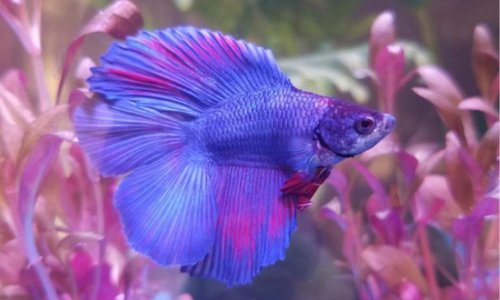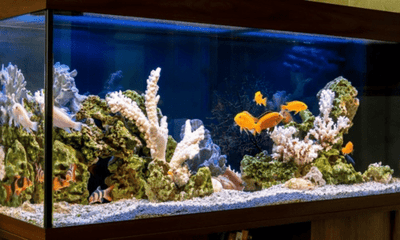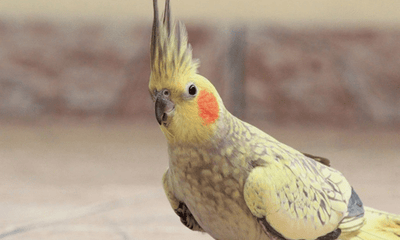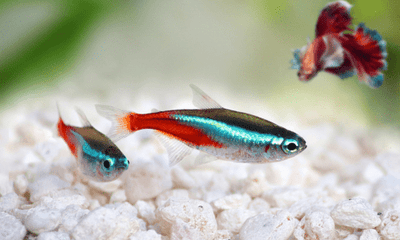
Photo by Happy May from Deposit Photos
Halfmoon Betta Fish, with their spectacular tail fins that fan out like a half-moon, are a sight to behold in any aquarium. These vibrant and graceful creatures capture the hearts of fish enthusiasts across Australia, bringing a splash of colour and elegance to homes. Originating from the warm waters of Southeast Asia, these fish have adapted to various living conditions, yet they thrive in environments that closely mimic their natural habitats.
Creating the perfect aquatic home for a Halfmoon Betta is more than just a matter of aesthetics. It requires an understanding and catering to their specific needs. With their unique requirements and sensitivity, maintaining the ideal tank conditions becomes paramount to their health and well-being. A well-set-up tank ensures that these magnificent fish live a long and healthy life and allows their personalities and natural behaviours to shine through.
Setting Up the Perfect Tank
Creating an ideal environment for your Halfmoon Betta starts with selecting the right aquarium. Opt for a minimum tank size of 19 litres to ensure ample space for swimming and territory establishment, which are crucial for the well-being of these active fish. Larger tanks facilitate better water quality control and allow for a more stimulating and complex landscape.
Tank Placement and Lighting
The location of your Betta's tank is critical. Place it in an area with low foot traffic to minimise stress from constant movement, yet ensure it receives indirect natural light to support your fish's circadian rhythms without causing harmful temperature fluctuations. Stability in the tank's environment is key to maintaining your Betta's health.
Decorating Your Betta's Home
When decorating an aquarium, balance aesthetics with functionality. Prefer silk or live plants over plastic ones to prevent fin damage, and add non-sharp decorations and caves for exploration and safety. These elements beautify the aquarium and provide necessary hiding spots, offering a sense of security and mimicking the Betta's natural habitat.
Substrate and Filtration
Choose a smooth, fine-grained gravel or sand substrate to avoid injuring the Betta. Incorporate a gentle filtration system to keep the water clean while avoiding strong currents, as Bettas thrive in still or slow-moving water. A filter with adjustable flow settings allows customisation to meet your Betta's preferences.
Looking for more tips on maintaining the ideal fish tank conditions? Japanese Fighting Fish offers valuable resources, guiding fish enthusiasts through aquarium care and maintenance basics.
Water Quality and Parameters
Maintaining pristine water conditions is paramount for a healthy aquarium. Their sensitive nature means they can be adversely affected by unsuitable water conditions, leading to stress and illness.
Temperature
Halfmoon Bettas are tropical fish requiring warm water temperatures between 25°C to 27°C (77°F to 80°F). Consistent temperatures within this range simulate their natural habitat, supporting their immune system and overall health. Use an aquarium heater with a thermostat to maintain stable water temperatures, especially during cooler months.
pH Level
The optimal pH level for Halfmoon Bettas ranges from 6.5 to 7.5. This slightly acidic to neutral range is crucial for their physiological processes. Regular testing with a reliable pH test kit will help you monitor the water's acidity and adjust as necessary to keep it within the ideal range.
Hardness
Water hardness, which measures the concentration of dissolved minerals, should be kept at a moderate level for Halfmoon Bettas. Aim for general hardness (GH) between 3-4 dGH (50-66.7 ppm) and carbonate hardness (KH) of 3-5 dKH (53.6-89.4 ppm) to ensure the water's mineral content supports their health without being too harsh.
Ammonia, Nitrite, and Nitrate Levels
Ammonia and nitrite levels should always be at 0 ppm, as these substances are toxic to fish even at low concentrations. Nitrates, a less toxic byproduct of the nitrogen cycle, should be kept below 20 ppm. Regular water changes and a well-maintained filter system are essential for controlling these levels and ensuring a healthy environment for your Betta.
The Importance of Aeration
While Bettas, due to their labyrinth organ, are capable of breathing air from the surface, proper aeration is still essential for maintaining high water quality and ensuring there's enough dissolved oxygen for beneficial bacteria. Gentle water movement at the surface, created by the filter output or an air stone, facilitates the exchange of gases and helps keep your Betta's environment healthy and balanced.
Diet and Nutrition

A balanced diet is fundamental to the health and longevity of your Halfmoon Betta. These carnivorous fish require specific nutrients to maintain their vibrant colours, energy levels, and overall well-being.
- Protein-Rich Foods: Quality betta pellets or flakes designed for bettas provide a good base diet. Supplement this with live or frozen foods such as brine shrimp, daphnia, and bloodworms to mimic their natural feeding habits and provide essential nutrients.
- Feeding Frequency and Amount: Overfeeding can lead to health and water quality problems. Feed your Halfmoon Betta once or twice a day, offering only as much food as they can consume in about two minutes.
- Variety for Nutritional Balance: Incorporating various foods in your Betta's diet ensures they receive a range of nutrients. Alternate between pellet/flake foods and live or frozen treats to keep your Betta healthy and prevent dietary boredom.
- Water Quality: Feeding practices directly impact tank water quality. Uneaten food and fish waste can pollute the water, so maintaining a clean tank and performing regular water changes are essential for your fish's health.
Wrapping Up
Embracing the care of a Halfmoon Betta fish is a journey that rewards patience and attentiveness with vivid displays of colour and personality. By crafting an environment that mirrors their natural habitat through thoughtful tank setup, precise water management, and nutritional diligence, you unlock the full potential of these captivating creatures. A commitment to their well-being fosters a deep bond between you and your aquatic companion, enriching both worlds.






